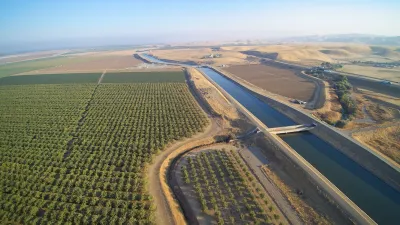The Ohio Power Siting Board through a wrench in plans for a solar project in southern Ohio, raising questions about the viability of renewable energy in the state.

"The Ohio Power Siting Board [in October] voted to pull the final approval for a solar project planned for southern Ohio," reports Mark Williams.
The project in question, Nestlewood Solar Farm, was an 80-megawatt solar project proposed for Brown and Clermont counties in southwestern Ohio. "The energy generated by the project would deliver power to a single point of interconnection (POI) into Duke Energy Ohio Kentucky’s existing South Bethel-Brown 69-kV transmission line," according to an article written in February 2019 by Corina Rivera-Linares.
The decision to kill the project caught environmentalists and renewable energy advocates by surprise, according to Williams, and now there's "fear the move will further discourage development of solar and other projects in the state."
Sam Randazzo, who serves as the board’s chairman by virtue of his job as chairman of the Public Utilities Commission from Ohio, pushed for the sudden demise of the project. According to Williams, Randazzo cited environmental reasons—like endangered species, glare off the solar panels, and agricultural and stormwater impacts—as reasons to suddenly kill the project.
One quote from the article sums up the concerns of renewable energy advocates in response to the news:
“Yesterday’s surprise regulatory delays at the Ohio Power Siting Board could introduce tremendous new uncertainty to the permitting process — in a state that has already presented renewable energy developers and consumers with policy challenges,” Bruce Burcat, executive director of the Mid-Atlantic Renewable Energy Coalition, said in a statement. “We continue to be concerned Ohio is going backwards.”
FULL STORY: Environmentalists, others worry as state board pulls plans for solar project

Study: Maui’s Plan to Convert Vacation Rentals to Long-Term Housing Could Cause Nearly $1 Billion Economic Loss
The plan would reduce visitor accommodation by 25,% resulting in 1,900 jobs lost.

North Texas Transit Leaders Tout Benefits of TOD for Growing Region
At a summit focused on transit-oriented development, policymakers discussed how North Texas’ expanded light rail system can serve as a tool for economic growth.

Why Should We Subsidize Public Transportation?
Many public transit agencies face financial stress due to rising costs, declining fare revenue, and declining subsidies. Transit advocates must provide a strong business case for increasing public transit funding.

How to Make US Trains Faster
Changes to boarding platforms and a switch to electric trains could improve U.S. passenger rail service without the added cost of high-speed rail.

Columbia’s Revitalized ‘Loop’ Is a Hub for Local Entrepreneurs
A focus on small businesses is helping a commercial corridor in Columbia, Missouri thrive.

Invasive Insect Threatens Minnesota’s Ash Forests
The Emerald Ash Borer is a rapidly spreading invasive pest threatening Minnesota’s ash trees, and homeowners are encouraged to plant diverse replacement species, avoid moving ash firewood, and monitor for signs of infestation.
Urban Design for Planners 1: Software Tools
This six-course series explores essential urban design concepts using open source software and equips planners with the tools they need to participate fully in the urban design process.
Planning for Universal Design
Learn the tools for implementing Universal Design in planning regulations.
Ascent Environmental
Borough of Carlisle
Institute for Housing and Urban Development Studies (IHS)
City of Grandview
Harvard GSD Executive Education
Toledo-Lucas County Plan Commissions
Salt Lake City
NYU Wagner Graduate School of Public Service





























